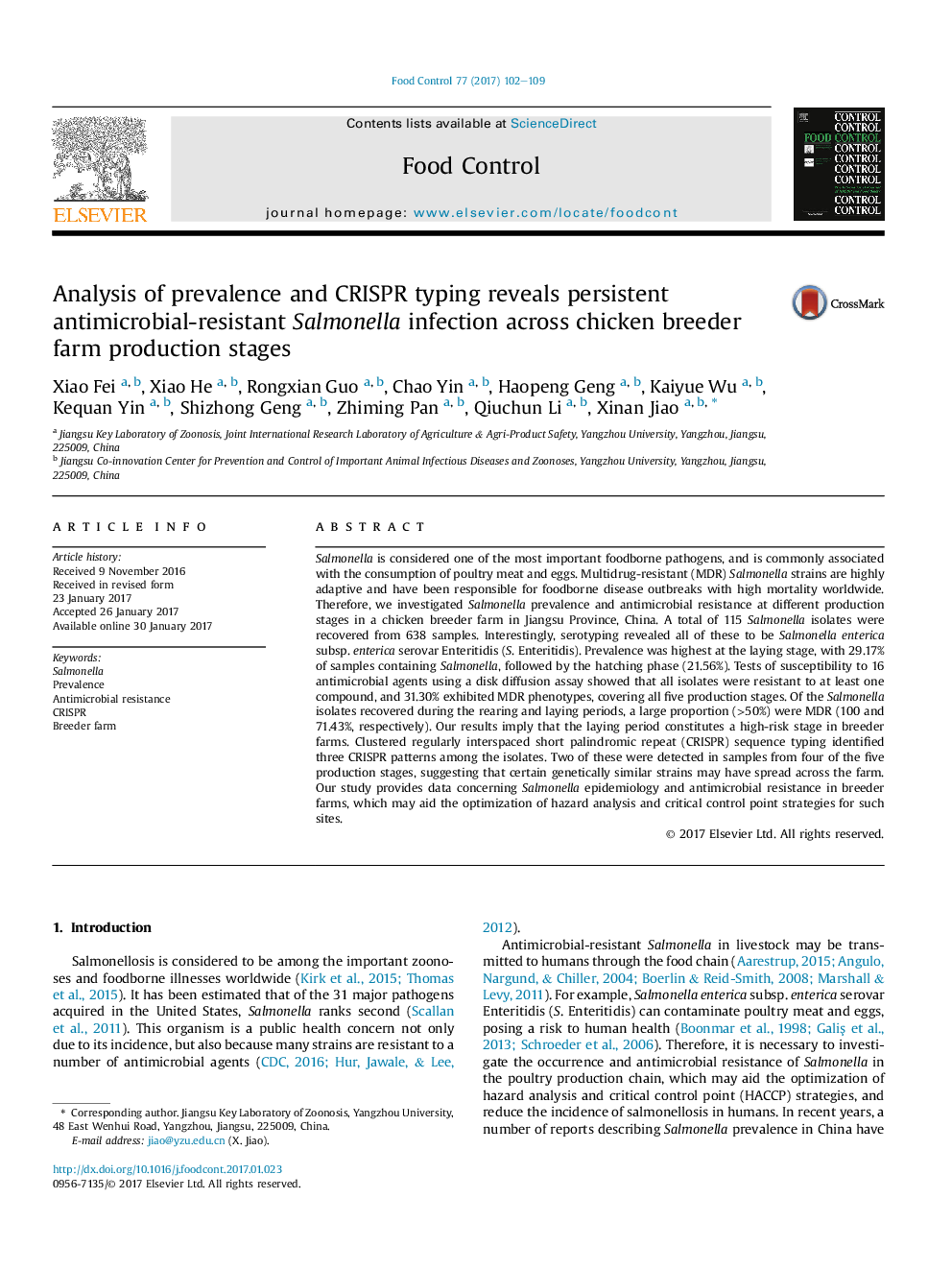| کد مقاله | کد نشریه | سال انتشار | مقاله انگلیسی | نسخه تمام متن |
|---|---|---|---|---|
| 5767557 | 1628387 | 2017 | 8 صفحه PDF | دانلود رایگان |

- Report of Salmonella presence and antibiotic resistance in a chicken breeder farm.
- CRISPR typing of isolates was carried out.
- Laying may be a high-risk phase for Salmonella infection.
- Introduction of breeder birds may constitute a Salmonella infection source.
- CRISPR typing can be used to distinguish highly clonal S. Enteritidis isolates.
Salmonella is considered one of the most important foodborne pathogens, and is commonly associated with the consumption of poultry meat and eggs. Multidrug-resistant (MDR) Salmonella strains are highly adaptive and have been responsible for foodborne disease outbreaks with high mortality worldwide. Therefore, we investigated Salmonella prevalence and antimicrobial resistance at different production stages in a chicken breeder farm in Jiangsu Province, China. A total of 115 Salmonella isolates were recovered from 638 samples. Interestingly, serotyping revealed all of these to be Salmonella enterica subsp. enterica serovar Enteritidis (S. Enteritidis). Prevalence was highest at the laying stage, with 29.17% of samples containing Salmonella, followed by the hatching phase (21.56%). Tests of susceptibility to 16 antimicrobial agents using a disk diffusion assay showed that all isolates were resistant to at least one compound, and 31.30% exhibited MDR phenotypes, covering all five production stages. Of the Salmonella isolates recovered during the rearing and laying periods, a large proportion (>50%) were MDR (100 and 71.43%, respectively). Our results imply that the laying period constitutes a high-risk stage in breeder farms. Clustered regularly interspaced short palindromic repeat (CRISPR) sequence typing identified three CRISPR patterns among the isolates. Two of these were detected in samples from four of the five production stages, suggesting that certain genetically similar strains may have spread across the farm. Our study provides data concerning Salmonella epidemiology and antimicrobial resistance in breeder farms, which may aid the optimization of hazard analysis and critical control point strategies for such sites.
Journal: Food Control - Volume 77, July 2017, Pages 102-109